Everybody in the place. Clubbing as an antidote to the contemporary art institution?

Lately, art criticism has been mainly focusing on the critique of the institution and the limits that are reached by cultural organisations. Be it harassment at work, tyrannical leaderships, art programs lacking in inclusiveness, perpetuated hierarchies, patriarchy within the executive boards, or the interference of patronage from major corporations, the most progressive people of the art world are trying these days to put an end to the machinations, schemes and habits which are all now too visible to be hidden. The hour has to come to imagine other models and to push past the cumbersome model of the institutional system currently operating. As stated through their cultural objectives and programs, the political authorities now in power have very frequently expressed their discontent with artistic programmers of these same institutions (which are thus subsidized by local authorities), for not being sufficiently open and accessible to non-initiated audiences. Although these rebukes are often questionable and rarely objective, they are sometimes shared by people involved in the arts, as they themselves try to make the dissemination of contemporary art ever more “democratic”. Winning over a vast diversity of crowds still remains nowadays a major aim for any department dealing with audiences. Yet, after some twenty years of cultural mediation and arts outreach programs, contemporary art institutions—which, incidentally, have at their disposal ever more effective and efficient means of communication—see themselves repeatedly and invariably accused of elitism. They are blamed for being clique-like coteries favouring their peer-groups and old-boy networks, so to speak. They are seen as divorced from the “general public” and struggling to put forward their “common good” role, unwilling to impose it by force.
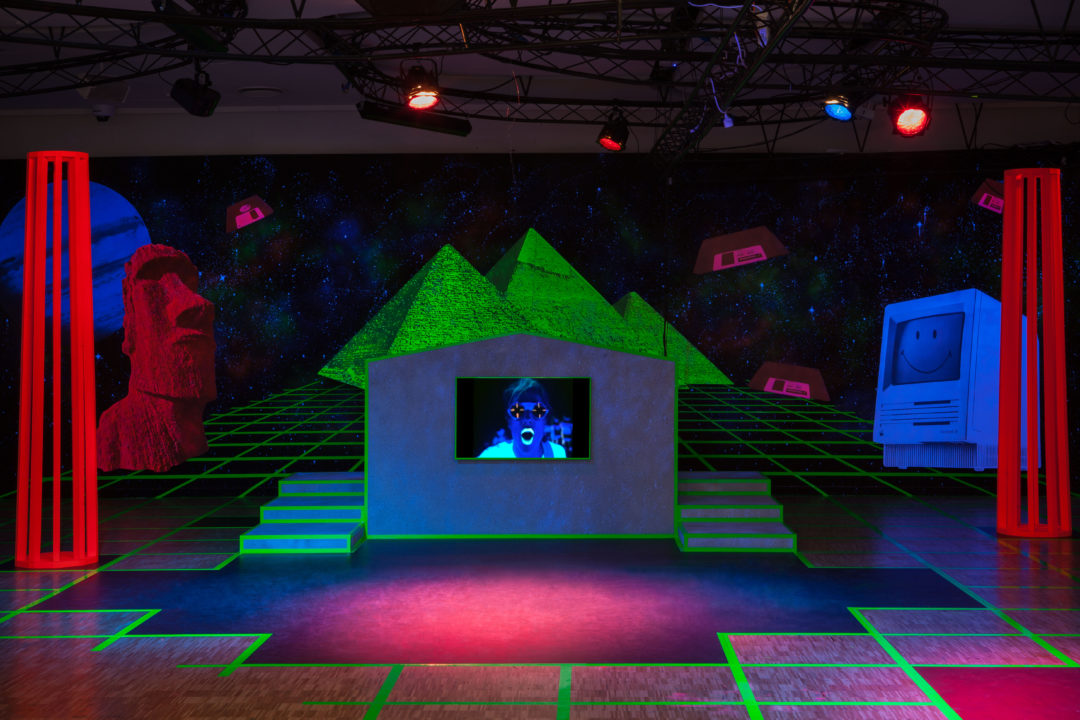
Vue de l’exposition au / Exhibition view at Studio 13/16 du Centre Pompidou, Paris.
Courtesy Diane Arques – ADAGP, 2017.
Yet, at the same moment, club and rave cultures of the 1990s are undergoing a resurgence of interest amongst artists and people involved in the contemporary art world. This interest arrives at a timely moment for a socio-professional stratum who is not sure how to rid itself of the constraints of their own institutional system. A plethora of artists’ works, critical essays and exhibitions attests to the revival of this culture and the “cool” attraction that can be wielded by emblematic clubs on the artistic globalized community. It would thus seem that contemporary art deciphers in clubbing an ideal solution for solving its “institutional crisis”.
“Nightlife” cannot be separated from the life of artists. It offers them inspiration, entertainment, socialization, licit and illicit alike, by way of music and various substances. It provides them with the refinement of professional networks thanks to increasingly more fluid encounters taking place in a festive atmosphere. The significance of the nocturnal world for artists goes way back, as pointed out by the exhibition Into the Night: Cabaret and Clubs in Modern Art, which was held at the Barbican Centre in London in 2019. Modernity has as such been thought of and built during nocturnal gatherings happening outside of venues traditionally earmarked for art. In these times of revival of the 1990s, the growing interest in club culture and raves appeared in the mid-2010s. The journalist Tobias Rapp acknowledged and pinpointed this new tendency in his overview of the German electronic music scene: “But if anything was clear in 2015, it was that electronic music in Germany is, above all, a generational project. Those born between 1970 and 1990 in East and West Germany alike use house and techno to tell each other about the world they know, people who came of age in the ’90s and found rock music boring, who experienced as schoolchildren the fall of the Berlin Wall, who took part in the Love Parade (or some other street parade), who witnessed first-hand the rise and fall of the rave movement and were subsequently part of electronic music’s withdrawal into that ample niche in which it is now growing and thriving”.1 If this is true of the German scene, the same goes for the Belgian and British scenes—all three being regarded collectively as the movement’s birthplace—,but also for the rest of Europe. Mark Leckey has constantly paid tribute to rave parties in his work, and quite specifically in 2003 during his performance BigBoxStatueAction. For this work, the artist re-created a monumental sound system which dialogued with a sculpture produced in the 1940s by Jacob Epstein, and which is presented at Tate Britain.
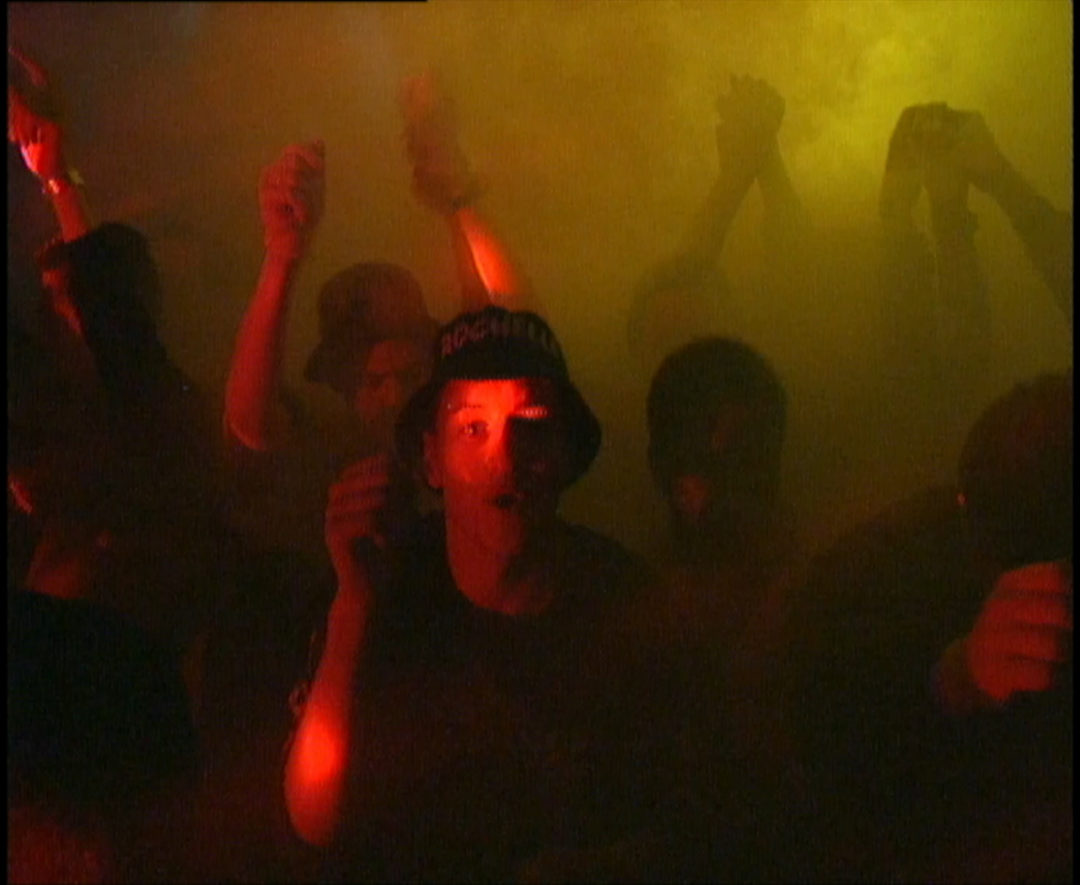
Similarly, Jeremy Deller developed an interest at a very early stage of his career in the popularity of club culture through projects such as The Search for Bez (1994), Do You Remember The First Time? (1995), —which highlighted the yellow smiley icon of acid house—, History of the World, and Acid Brass (1997). And yet, it was precisely in those latter years of the re-appropriation of club culture that the artist came up with the idea of a historicization of the movement with Everybody in the Place. An Incomplete History of Britain 1984-1992 (2018). The work emerged from his concern with educational transmission to young generations, while it re-situates itself at the same time within his overall approach as a vernacular historian of counter-cultures, if not to say with a certain British paganism that is always very present. The spectator attends a very didactic class given by the artist himself, recounting the saga of a youth which, finding itself too cramped in night clubs, decided to use the English countryside to gather around techno, house and trance music, which was then all the rage. This video, which is extremely joyous but not devoid of nostalgia, can only give rise to a feeling of belonging to a past that is still within arm’s reach, and whose rebirth is not purely fantasy. Having grown up in Frankfurt in the 1990s, a city rivalling Berlin over the beginnings of techno in Germany,2 Zuzanna Czebatul freezes Tristan, Kewin, Joss (2015)—the best dancers of the moment in Berlin’s nocturnal haunts—as they are in full motion. This sculpture is nothing less than an ode to clubbing, as it presents the legs of dancers clad in tracksuits, truncated but united forever. Simultaneously fun and lugubrious, the work reflects the uncertainties of a generation which, if it is doomed to fall, will do so with a festive and collective state of mind.

Mousse, polyester, metal / Foam, polyester, metal, 130 × 120 × 120 cm.
Courtesy de l’artiste / Courtesy the artist.
Opting for a different approach, Henrike Naumann also focuses on German clubbing, in order to question the ideological construction of re-unified Germany. Or rather, how the overlap between the rise of nationalism amongst the young generation of Germany and the boom of clubbing in former East Germany has come about. As she sometimes broadens her exploration and ideas to Europe and the world, the artist is interested in the issue of the claimed origins of techno, and more specifically in regards to the new beat music genre whose beginnings, according to common Western belief and opinion, lie in the Ancienne Belgique club of Antwerp in the late 1980s. Following nothing less than a full-blown investigation which took her to Congo, the artist has been attempting to review History. By way of the performance NEW BEAT – THIS IS CONGO! (2017), produced in close collaboration with the artists Rachel Nyangombe and Bebson de la Rue, Henrike Nauman offers to take a new look at the origins of new beat. Usually introduced as “purely” Belgian and as a genre that has not been influenced by African-American Detroit and Chicago, this famous ‘beat’ turned out to be born out of the music scene of Kinshasa. At the core of her post-colonial approach to this issue, distribution and invisible cultural exchanges come to subvert and interfere in a Western history of electronic music that is over-lubricated and would benefit from extricating itself from a claimed authorship tinged with repressed nationalism. As an enthusiastic follower of and contributor to Belgium’s club culture, Xavier Mary has often drawn inspiration from the rave movement in his work over the past few years, and even launched DIESEL ‘project space’ (2013-2018) in an abandoned gas station on the outskirts of Liège, for which each opening night was enlivened by a micro-rave party jointly organized with Noëmie Merca. If most of his sculptures and installations are implicitly associated with the industrial aesthetics of rave culture, Too Many Parties (2017) unambiguously references the ingenious DIY approach to the construction from scratch of the sound systems and lighting of illegal parties. As a massive block made up of the headlights of various vehicles, surveyed by powerful white lighting capable of illuminating the darkest of nights, this sculpture incorporates a program which adjustes intervals and sequences of brightness similarly to lighting systems and units in night clubs. Extremely strong and resistant to all types of environments, Too Many Parties was designed to light up any kind of festival or exhibition venue. The recent research carried out by Tony Regazzoni, for its part, evokes the world of discotheques of his teenage years, somewhere between the kitsch decorum of vanished ancient civilizations, the discovery of his gay sexuality, and bad-taste commercial disco. Associated at times with Eric Tabuchi’s very “Becherian” series Discotheques (2016—in progress), an entire romantic and emotional history of French night clubs in rural and suburban areas is offered for our contemplation through his works.

Performers Rachel Nyangombe and / et Bebson de la Rue. Photo : Chris Shongo.
Rave culture and clubbing are as varied as the social groups which keep them alive. The LGBTQIA+ community lies very often at the root of many musical renewals and new clubs, from one decade to the next. In his documentary film WILDNESS (2012), Wu Tsang retraces the unusual history of a Los Angeles club called the Silver Platter and which has been a central host to the Latino LGBTQIA+ community since the 1960s. The Silver Platter is an example amongst so many others of a night-life catalyst, enabling everyone to live their life the way they want to outside of societal norms, and emphasizing the fact that the night-club is understood as a “safe space” for communities facing danger outside. Here, charmed by the spirit of a place populated with ‘queens’ originating from South American emigration, Wu Tsang co-organized for a little more than a year the WILDNESS nights, during which DJ sets and queer performances were the driving force behind the club’s Tuesday nights. Victim of their own success in no time at all, the parties brought in many members of the artistic community, — mainly white—, who started taking over club regulars no longer recognizing themselves in the slightly too artsy atmosphere.
In these times of health crisis, Wu Tsang—like many members of the queer-LGBTQIA+ community—is taking part in an online panel stemming from the Inferno programme as part of the ICA’s Takeover project. Takeover consists in regularly transforming the ICA’s theatre, bar and cinema into night clubs, late at night, thanks to invitations made to club collectives and night-owls.3 While night clubs, like all of social life, are currently suffering from lockdowns, Inferno continues to program DJs and “queer techno rave” creators, coming from the LGBTQIA+ underground. It tries to keep up its relation with the nocturnal world, as it is an irreplaceable place of emancipation, which this community finds itself temporarily cut off from.4
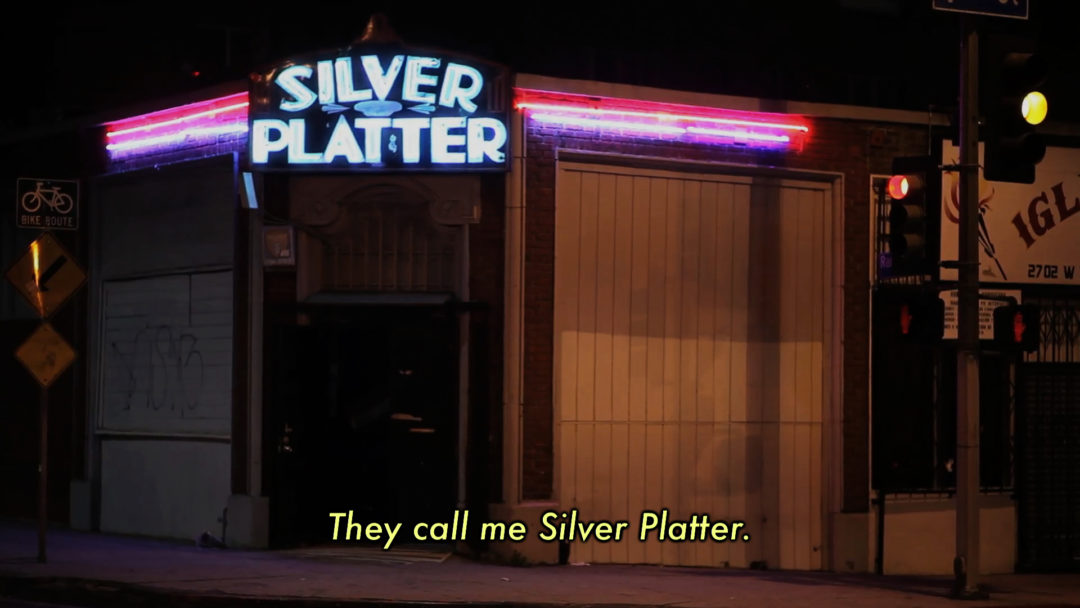
Vidéo monocanal HD avec son stéréo / Single channel HD video with stereo sound, dimensions variables / variable dimensions. Courtesy de l’artiste et / Courtesy the artist and Galerie Isabella Bortolozzi, Berlin.
A form of melancholy is the result, despite everything, of this situation, as is emerging the perspective of the permanent closure of nocturnal social venues, and which was described, in a prescient way, in the video Fiesta Forever (2016) by Jorge Jácome. The spectator lets himself slide into a slow tracking shot through the ruins of meccas of Portuguese nightlife, such as the Movida Beach, the Babooshka and the Luziamar, with, in voice-over, stealthy exchanges about the rituals of love and cruising of an evening. The work thus reveals itself as a “touching vision of the power of being together”. We have to ask ourselves today what will become of the post-Covid19 club culture, as we are witnessing the emergence of new ways of fearing the other, of avoiding contact, of thinking before touching, and of sharing our microbes and viruses. Will the passage of the virus and its consequent political decisions have the effect of closing clubs forever? If AIDS has not managed to do so, although it may have put an end to a certain form of carefreeness, the present virus might well change the deal. But as Fiesta Forever tries to demonstrate, “beyond the walls, dance is a revolution that can’t be stopped. We simply need to remember how we feel things,”5 and we shall see below how the post-Covid19 club culture might develop.
Be it is as it may, shortly before the virus entailed decisions to close night clubs, club culture was still a powerful source of inspiration for the current art scene, especially among Berlin artists hanging out at the Berghain, which very swiftly changed from being a place for nocturnal outings to a mythical club of international stature. In 2015 or thereabouts, the Berghain thus became a must venue for the international contemporary art community which, weary of its institutional system weakened by ever louder controversies, readily saw in clubbing a kind of salvation, combined with a nostalgia for the rave culture of the 1990s. While a number of artists and curators orally sang the praises of the famous club, no written testimony has been more revealing, brief though it might be, than Jenny Schlenzka’s report titled “What Art Spaces Can Learn From Legendary Berlin Nightclub Berghain”. In her short text, the curator in charge of Performance Space New York describes her experience at the club, which she unhesitatingly called “magical”. She notes that everything in it is done to enable people to turn towards others rather than themselves: “I became convinced that contemporary art institutions should stop looking to museums or theatres as role models and, instead, learn from nightclubs. […] The best parties are those in which you find yourself dancing and sweating with people you would rarely interact with in everyday life. In contrast, museums and theatres fail, despite their best efforts, to challenge the class divisions of their audiences.” Lastly, the author asks several questions appearing to be ideas to be put into practice by her peers: “ How would an art space look and feel if it could truly break down the alienating barriers of class, capitalist temporality and individualism? Could we create spaces for new collective experiences by radically rethinking opening hours and access; by allowing sound to play as important a role as the visual? If contemporary art institutions want to be truly contemporary, foster new ideas, alternative temporalities and new modes of bringing people together, then they need to stop fetishizing theatres and museums and start partying.”6 Caught in the present-day institutional slump, this point of view can only but seduce people and exhort them to alter art venue programming. But what results from the communicative spontaneity of this off the bat sentiment is a certain naivety, with a lack of historical and critical hindsight that prevent us from blindly clinging to its cause.
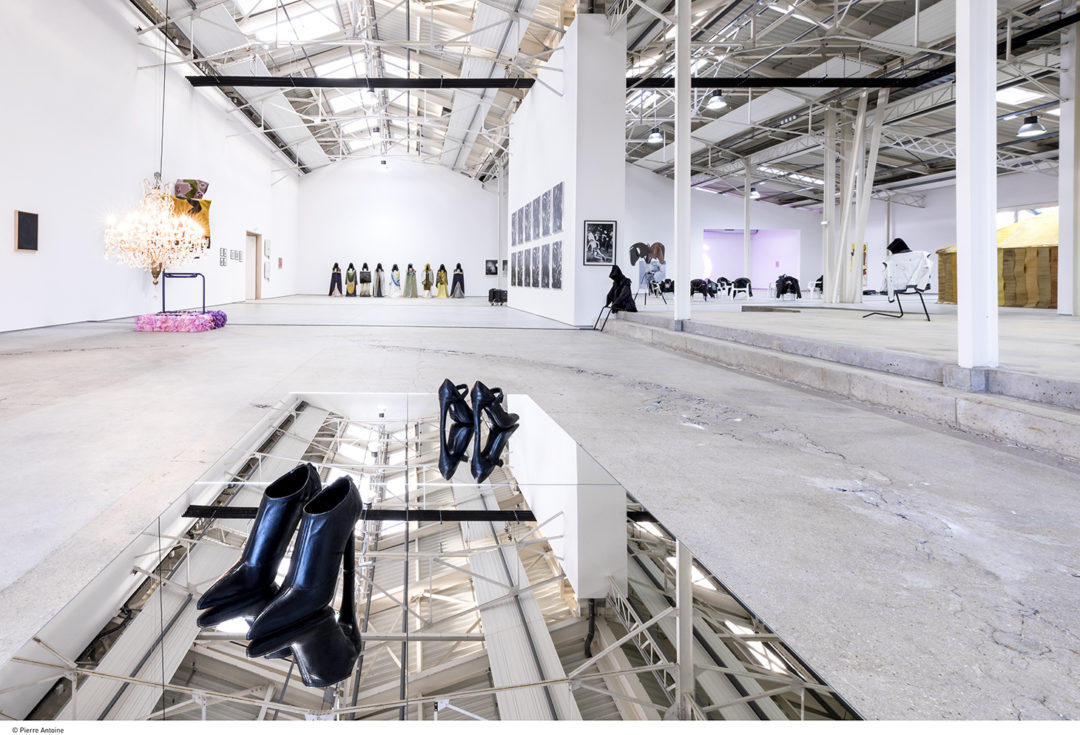
First of all because this enthusiasm for club culture is not in its early stages. The Berlin composer Robert Lippok recalls when art became dull for the visual arts scene, after the fall of the Berlin Wall. The vitality found in club culture seemed more exciting to artists than art itself, as if it was a kind of exoticism: “They wanted to elevate themselves using the clubs. Galleries suddenly wanted to be clubs. (…) Suddenly, all the artists wanted to be DJs themselves.” 7 And yet, this did not mean that the experience succeeded in putting an end to alienating barriers of class… Secondly, even though certain institutional programs and exhibitions have been recently flirting with club culture, it is rather difficult to foresee in them an experience as bewitching and magnetic in the long run as that of the nightclub. One might think for example of the exhibition “Energy Flash – The Rave Movement” presented in 2016 at the M HKA – Museum of Contemporary Art in Antwerp, which aspired to be the first exhibition to ever analyse the ideologies and aesthetics of rave culture and its effects on broader culture. Not trying to be experimental, the exhibition therefore remained very classical in its format, and gave a rather remote and distanced idea of the atmosphere found at raves. It wasn’t about bringing the rave into the art institution, but rather about analysing it as an object of study. Other projects have however attempted to get much closer to the club culture spirit, in what it emanates of physical and perceptual. The double exhibition “Tainted Love” organised by Le Confort Moderne in 2017 (and which was also presented for a “Club Edit” at the Villa Arson in Nice) is symptomatic of the renewed interest of art in club culture, even while acknowledging that its proximity to the venue’s well-known musical programming is not alien to this thematic choice. The subject-matter of the exhibition emphasised the physical and carnal sensations found in clubs of the end of the 80s and the beginning of the 90s. The works shown brought together all of the characteristic elements of the club atmosphere: mirrors, evening wear, entwined and moving bodies, uninhibited sexuality, lighting ambience… Décor sets and images settled for a mere replicate of the atmosphere of the nightclub, but the clubbers’ clothes remained desperately empty of bodies… The exhibition did not aim at taking steps towards a more performative and participatory project, although Le Confort Moderne surely remains the contemporary art institution in which the shift from gallery space to dancefloor would have been the most feasible. However, when the aesthetic and political conditions are met, it is not impossible to convert the traditional contemporary art institution into a temporary nightclub.
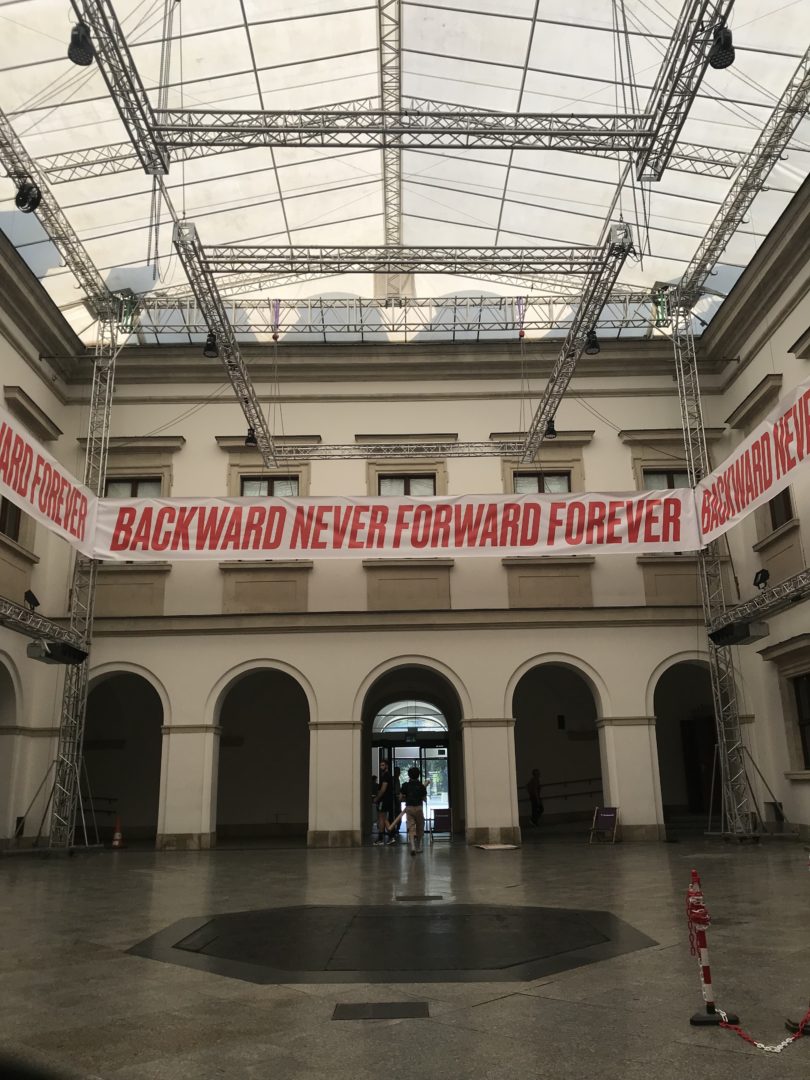
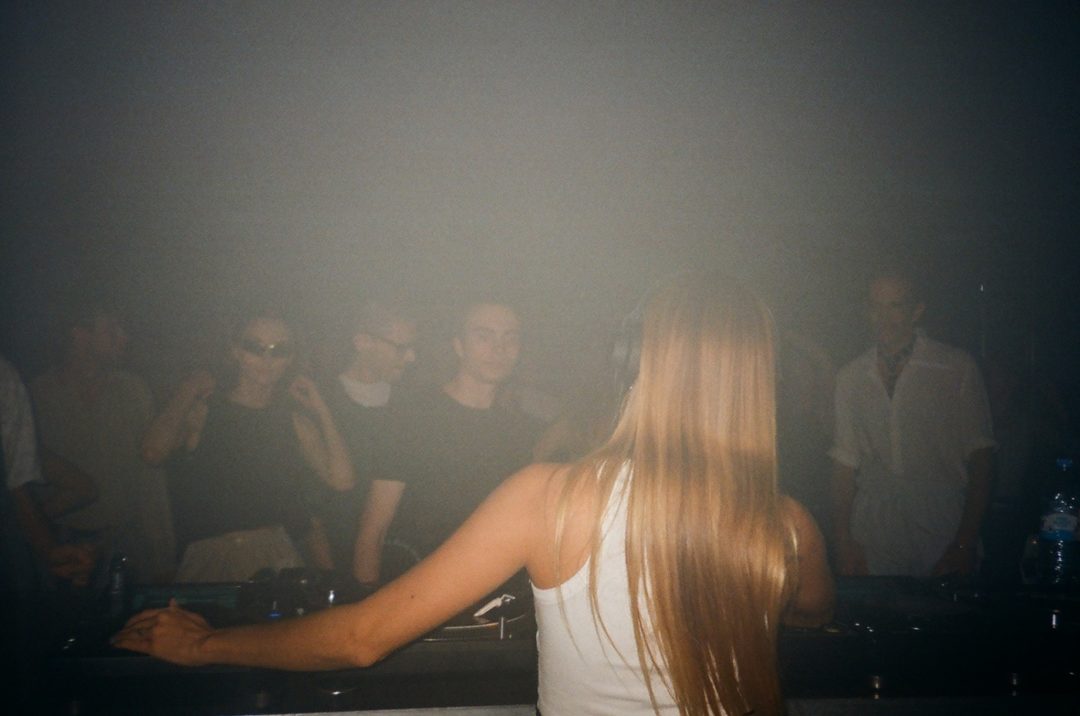
It is indeed a rave party that was held in the lobby of the Ujazdowski Centre for Contemporary Art in Warsaw in 2019 on the occasion of “To Be Real”8. Organised in several parts, “To Be Real” presented itself as a “performative-musical program examining club culture and its emancipatory potential, and exploring the relationship of politics, nightlife, and contemporary art, from the queer roots of electronic dance music in the 1970s to recent techno-protests on the streets of metropolises worldwide.” While the energy of this event was undeniable, “To Be Real” was without a doubt an antifascist cry deeply rooted in recent Polish social movements, and marked the end of an era for the Polish art centre. Indeed, set against the rise of the far right in Poland, “To Be Real” was set to finish as the institution’s management and leadership was soon passed on to Piotr Bernatowicz, notoriously known for his ultraconservative views. If this change in leadership seems to be a bad omen for contemporary art, “To Be Real” has certainly triggered thought on ways club culture could establish itself as a real tool for emancipation, and this well beyond clubs and contemporary art institutions. The fact that this evening occupied an art venue therefore remains quite anecdotal, as the repercussions of such an act go far beyond the context itself.
It would be actually quite desirable for this energy to spread beyond the clubs (or beyond the rave community) because, just like the contemporary art institution, club culture is also subject to codes. Even though it does not rely on the same discriminatory dynamics found within normative bourgeois society, club culture can be exclusionary and limited to a specific group, thus also reconfiguring a social system that can practice a form of rejection of “the other” (even if it is also, and rightly so, a matter of protecting itself). Whether one thinks about the anecdotes on bouncers at the Berghain and at nightclubs in general, on the cordon and the exclusivity of entrances, or on the secret locations of rave parties, it is difficult, as Jenny Schlenzka does, to marvel at the presence of people from supposedly different backgrounds, seeking personal and collective pleasures.9
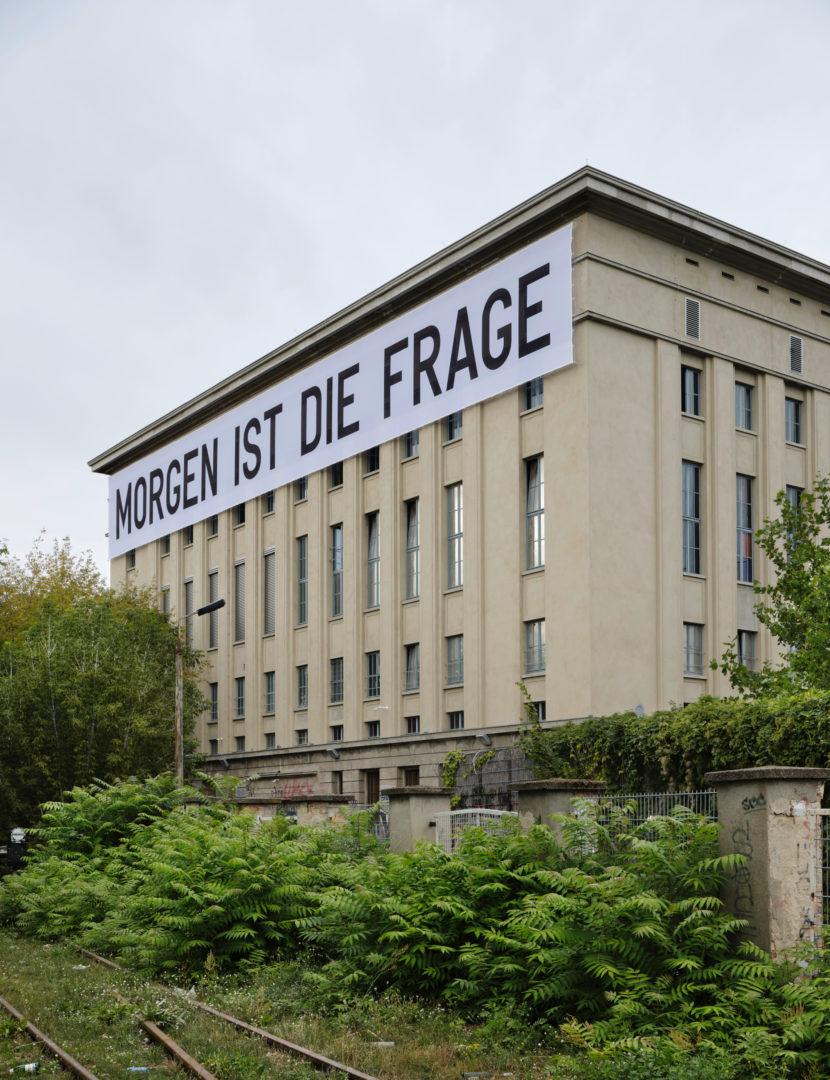
Her proposal also fails to address the consequences of such transdisciplinarity on each one of the artistic and creative fields. Contemporary art is now well known for making disciplines, –such as theatre and dance–, coexist within performative and sometimes participatory works. It therefore seems outdated to find anything new in the idea of making the public dance and interact with one another in a contemporary art institution. And if it were to adopt a format similar to that of the nightclub, what would become of it? What would its specificity be and what would remain? As a result of recent events and lockdown, it was not the art institution that turned into a nightclub, but rather ironically the Berghain, in a moment of weakness, that became an art space. In a grand gesture well known of today’s philanthropy, the Boros Foundation collaborated with the Berghain as the club closed, in order to open an exhibition entitled “Studio.Berlin”.10 The exhibition presented one hundred and eighteen artists from Berlin’s art scene, obviously affected by the health crisis, and donated the profits from the entrance fees to the club’s team, which was also itself in a difficult position. It is less important here to wonder whether the exhibition was good or not, than to note that art seems to have endorsed the role of a spoiled child, colonizing a space that is not meant for it, and thus leaving a bitter taste in the mouths of the club’s regulars. For if the initiative may have seemed “cool” in the eyes of an artistic community fan of the Berghain, an artist friend who is also involved in the music scene pointed out to me that “what art gains, music loses”. Many neighbourhoods in international cities have also lost a great deal following their coexistence with the art world. The case of gentrification has shown how art’s investment in specific spaces has never remained without consequences.11 Even though I believe that the art ecosystem cannot really be blamed for such a phenomenon, –because it is rather subject to manipulation as a result of its constant precarity–, we must acknowledge its destructive potential as soon as it integrates an alternate reality. As art allows municipalities to renew the demographic of certain neighbourhoods (and real estate developers to increase their costs), it also undermines the myth and mysteries of the Berghain by making visible a space whose previous invisibility and rumours have contributed to building its reputation. Robert Lippok has previously described the relationships between the art scene and the Berlin club scene in the early 1990s as “vampiric”. “At the time, there was not so much impetus from within the art scene itself. But they noticed that the hot shit happened in the clubs. It was a kind of blood transfer from one direction to the other. That was, however, a relatively one-sided process.”12 If in many cases, and in spite of itself, art turns out to be vampiric and destructive, it would be better if it avoided having its institutions rely on external models to renew themselves. These institutions would certainly run the risk of endangering them.
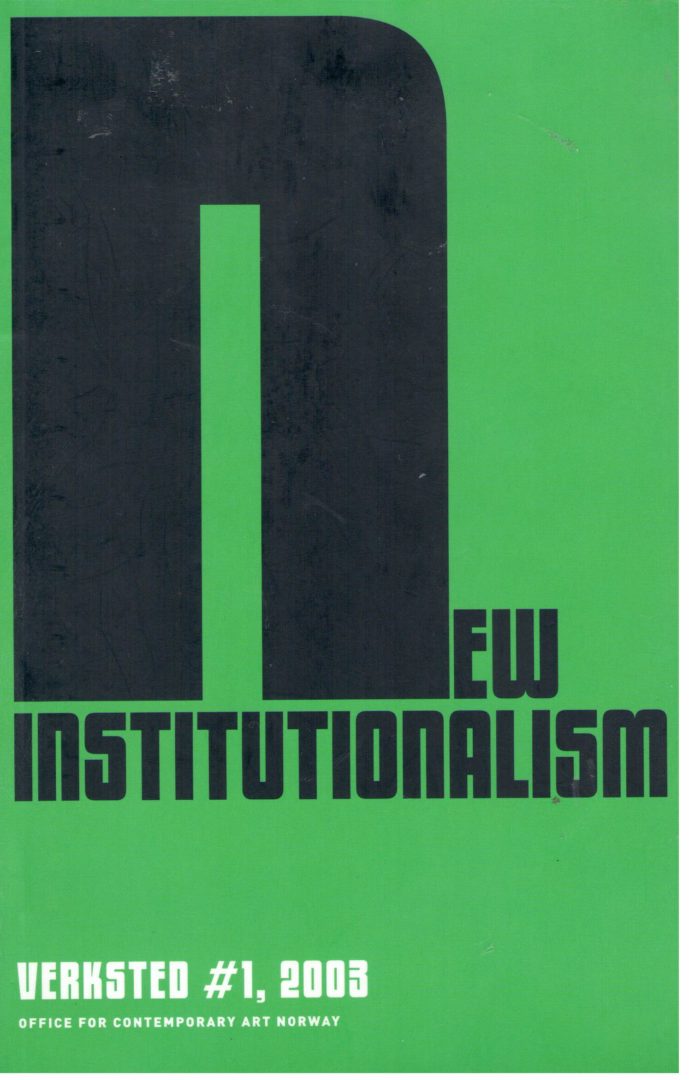
Art is also destructive when it attacks itself; and the tenacious belief in the possibility of reforming the institution from within, has led to a string of failures over the last forty years. Despite specific recognisable and undeniable developments in today’s public programs, the neo-institutional art movement has not succeeded in turning the contemporary art institution into the great agora of democratic participation that it had originally envisioned in the late 1990s and early 2000s. By programming institutional critique and its values within it, “New Institutionalism” has given the institution the means to better frame the impetus for social change by reifying its emancipatory reach, turning it solely into a curiosity, an aesthetic object amongst many other works to be seen. Once the short era of neo-institutional experimentation was ended by budget cuts, its curators, having found roles and positions of greater visibility, were able to disseminate their innovative concepts to their peers, as well as to the next generation.13 Artistic directors nowadays can still invoke and refer to this critical discourse, provided that it does not drive out what is expected from cultural policies, – that is to say, the offer of experiencing any art object, whatever it might be. Each and any artistic director will be able to do what they want, to turn an experimental and critical proposal into a discourse that becomes acceptable for normative and standardized politics; they will not be able to extract themselves from the institutional framework set by the ruling power.
What we can learn today from the trials and tribulations of “New Institutionalism”14, is that the institution cannot renew itself from within, and that it may only be possible for experimental forms of exhibition, outside of the institutional field, to achieve the total and non-binding freedom eagerly desired by the artistic community. Many examples of initiatives throughout the world come to mind. Structures which are non-contracted and often neglected by intrusive patrons have managed, with a discreet communication scheme, to remain free of any pressure and constraint on their discourse and perspectives. Since opening in the early 2010s, Treignac Projet has been organising exhibitions, residencies and focus groups while slowly but surely redeveloping its two large buildings into living, working and exhibition spaces. In the summer months, communities of artists come together to imagine new ways of living together on a local scale, thus reinventing how artistic life takes place in rural areas. Recently invited by the Treignac Projet, The Cheapest University is an experimental and free school, nomadic and free of a predetermined programme, which is activated through invitations and projects. Taking as its starting point the failure felt by its members of the conventional education system, this school believes in producing knowledge collectively, and transmitting it. In addition, the artworks created by the artists are an integral part of their different teaching formats, thus highlighting the importance of the pedagogical aspect of a work and its exhibition. Located not far away from Tarnac on the Millevaches plateau, La Pommerie is a space of creation occupying a central part in sharing and disseminating contemporary culture within a very remote geographical and social setting. La Pommerie is a space for art residencies, which also organises lecture series and conferences on the subject of sustainability and the environment, and exhibitions and workshops linked to issues specific to its territory and its inhabitants. The intellectual works thus allow visitors to come together, in order to discuss and collectively build common projects. Because these examples of structures already have established and clear political commitments (whether aesthetic, social, educational, economic or sometimes all of them at once), it is very easy for them to navigate from one format of presentation to another. And dancing together to music, whatever it may be, during festivals or exhibitions, appears to be quite obvious. Thus, it is perhaps here that art and club culture can come together, not as a model or a beneficial asset to one another, but rather by finding those junction and connection points that allow them to become aesthetic and social forces in which anyone can recognize their aspirations.
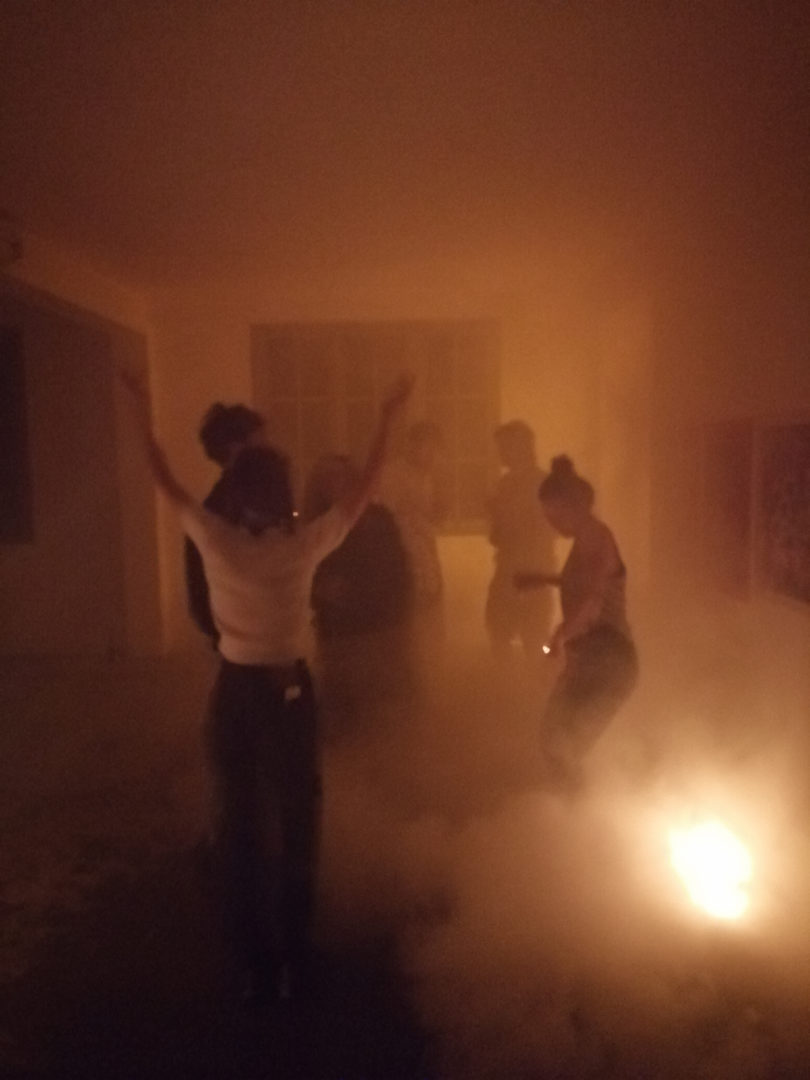
Even though the original rave movement has been formerly analysed as apolitical,15 the current context makes it difficult to consider club culture as a depoliticised experience. Too many of its supporters seem to believe in a future of political renewal for each and one of the communities that make up this movement. As such, and as a final response to Jenny Schlenzka’s essay, club culture is only inspiring if it spreads out into the streets and attempts to take over public space, as “Three is a Crowd”, the next International Biennial of Urban Art OUT OF STH of Wrocław, intends to do. Even though the Biennial puts forward a list of artists taking part in a very trendy topic, one should rather bet that the current insurrectional Polish climate will give wings to a project planning to look into “modern-day streets and dance floors, examining how bodies form temporary communities through physical presence in public space, and how they transform the old reality and create new conditions.”16 This project has the benefit of urging all creative and social projects and ideas to withdraw from the institution, in order to spread in the urban world. “From Georgia’s rave revolution in 2018, through the political dimension of rave culture and queer aspects of clubbing, to the mechanisms of building social solidarity in the conditions of forced physical isolation as well as practising pleasure in a crisis situation,”17 the movements of bodies in the public realm, –should it be dancing bodies, bodies in love, politicised bodies, exhausted bodies, mistreated and yet determined bodies–, prove to be the greatest source of inspiration as they refuse to remain static, over and over again. As it has been tirelessly chanted by house music anthems, “Let’s move our body!”.
My thanks go to Zuzanna Czebatul, Benjamin Thorel, Merlin Carpenter and Xavier Mary, for their respective contributions.
- Tobias Rapp, « Electronic Music 2015. A Generational Project », 2016, can be consulted at : https://www.goethe.de/en/kul/mus/gen/ele/jah/20699019.html
- Tobias Rapp, Op. Cit.
- https://www.ica.art/live/ica-takeovers
- https://www.ica.art/live/inferno
- https://www.vdrome.org/jorge-jacome/
- Jenny Schlenzka, « What Art Spaces Can Learn From Legendary Berlin Nightclub Berghain », janvier 2019, can be consulted at : https://www.frieze.com/article/what-art-spaces-can-learn-legendary-berlin-nightclub-berghain
- Interview by Ji-Hun Kim, “Robert Lippok on The Relationship Between Berlin Club Culture and Contemporary Art”, August 2018, accessed here: https://daily.redbullmusicacademy.com/2018/08/berlin-club-culture-and-art.
- https://u-jazdowski.pl/en/programme/perfo/to-be-real-2.
- Jenny Schlenzka, “What Art Spaces Can Learn From Legendary Berlin Nightclub Berghain”, January 2019, accessed here: https://www.frieze.com/article/what-art-spaces-can-learn-legendary-berlin-nightclub-berghain.
- https://www.studio.berlin/.
- For details see Sharon Zukin, Loft Living. Culture and Capital in Urban Changes, Johns Hopkins University Press, Baltimore, 1982, or Martha Rosler, Culture Class, Sternberg Press, Berlin, 2013.
- Interview by Ji-Hun Kim, “Robert Lippok on The RelationshipBetween Berlin Club Culture and Contemporary Art”, August 2018, op. cit.
- For details on the history of “New Institutionalism”, see Jonas Ekeberg, dir., “New Institutionalism” Verksted #1, Office for Contemporary Art, Oslo, 2003; and more recently Lucie Kolb & Gabriel Flückiger, dir., “(New) Institution(alism)”, ONCURATING n°21, Zürich, December 2013
- James Voorhies, dir., What Ever Happened to New Institutionalism?, Carpenter Center for the Visual Arts, Cambridge, MA, Sternberg Press, Berlin, 2016
- Helen Evans, Out of Sight Out of Mind: An Analysis of Rave Culture, Wimbledon School of Art, 1992, accessed here: http://hehe.org.free.fr/hehe/texte/rave/.
- Extract from the exhibition statement, accessed here: https://bwa.wroc.pl/language/en/events/threes-a-crowd-an-exhibition-of-out-of-sth-vi-space-absorbency/
- Ibid.
Image on top : Xavier Mary, Too Many Parties, 2017. Aluminium, phares de camion avants et arrières, câbles néoprènes/Aluminum, truck headlights, truck rear lights, neoprene cables, 146 × 127 × 202 cm. Activée à l’occasion du Festival Supervue/Activated on the occasion of Supervue Festival, Liège, 2017.
Photo : Laura Hinzen.
- Share: ,
- By the same author: Protective Body, Post Human,
Related articles
Paris noir
by Salomé Schlappi
Some white on the map
by Guillaume Gesvret
Toucher l’insensé
by Juliette Belleret

